My 18 year old daughter has been passionate about fashion since birth. A couple of years ago she began to turn that passion into a mission. She has educated herself and advocated for slow fashion. She has not only taught me a lot about justice, she has also helped develop an action plan at Mercy House Global regarding ethical fashion. Because of her influence, Mercy House Global and Fair Trade Friday are releasing a comprehensive Ethical Shopping Guide today. Can a kid really change the world? Yes, yes, they can.
Guest post by Madison Welch
2 years ago, I was just like every other teen girl. I loved fashion and cute clothes, and any extra money I had was spent on weekend shopping trips to the mall.
I would shop the sale racks at my favorite stores, like H&M, Forever 21, American Eagle, and Altar’d State. I found a coupon for everything, and when I got an item for less, it just sweetened the deal. Finding a five dollar t-shirt or ten dollar jeans made my day.
However, I had never stopped to think about what that five dollar t-shirt was costing someone else.
Although I was raised with a global mindset and missional view of the world because of my parent’s nonprofit Mercy House Global, no one had ever told me about the horrible practices that go on in the factories in many of the world’s largest fast fashion brands.
But when I was in Ethiopia on a Mercy House Global trip in 2016, my world was forever changed.
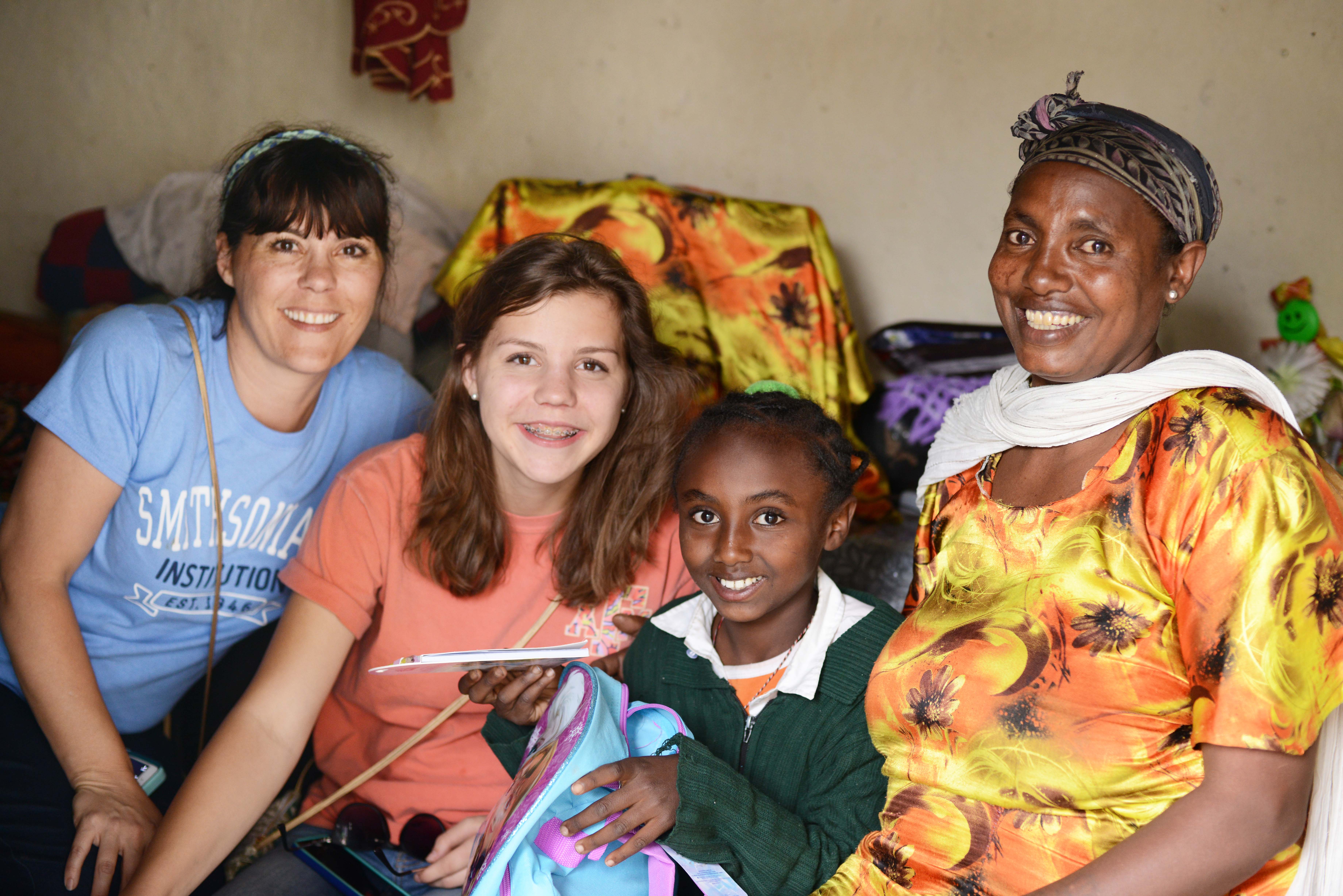
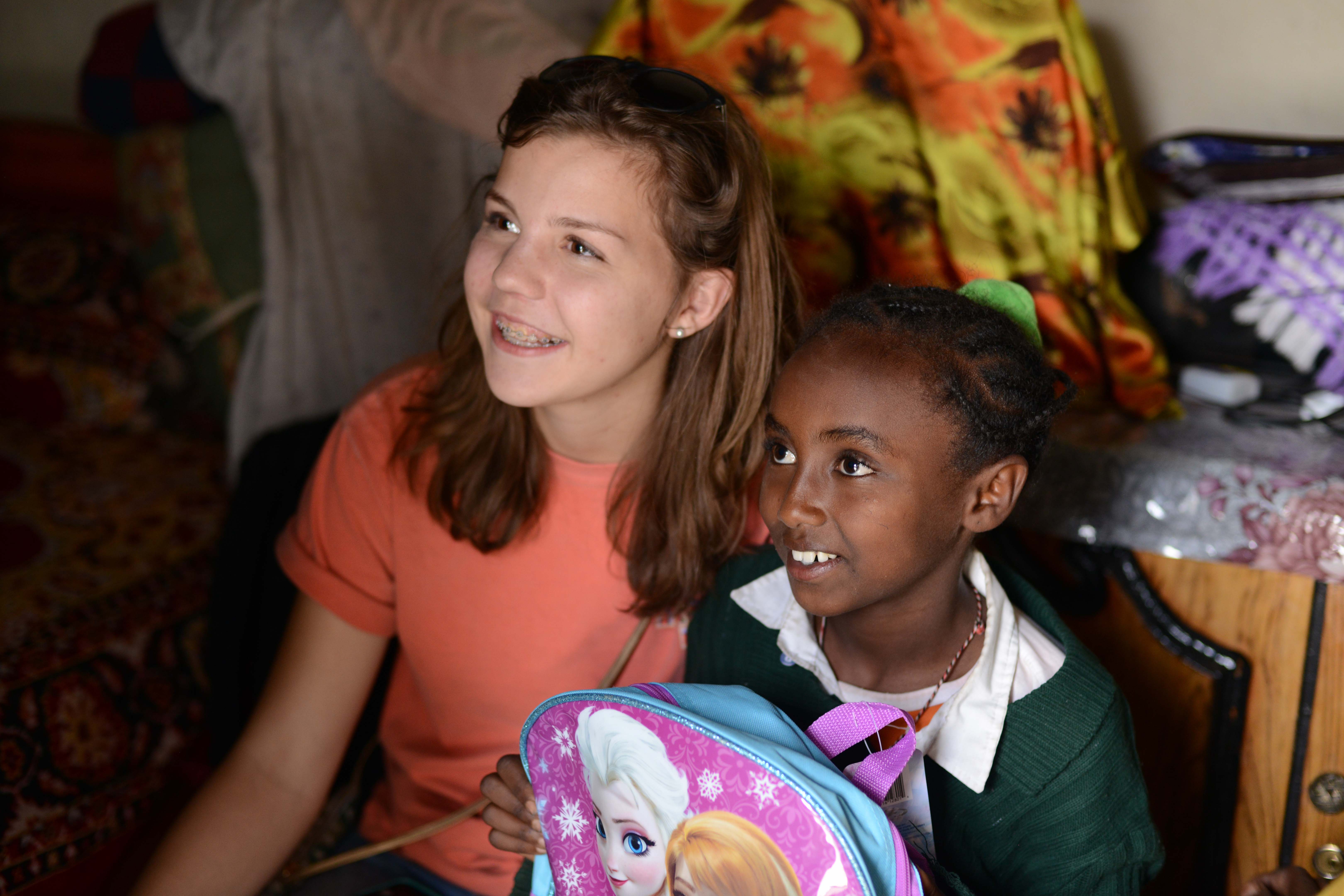
In Ethiopia, my mom and I planned to meet and partner with a non-profit that employed women to sew clothes and school uniforms for kids. However, we were met with the shocking news that the organization was closing. The nonprofit’s founder explained to us that the women of his nonprofit couldn’t compete with the prices of a neighboring factory.
No one wanted to buy ethically made clothes when they could just as easily be made for cheaper by the factory next door. A factory owned by corrupt managers, who employed their garment workers with salaries of less than 20 cents an hour. And when the non-profit leader confronted the managers about their exploitative wages, the managers simply replied that they could lower the wages to 10 cents, and people would still line up for jobs. This factory was one of H&M’s largest suppliers.
*This information is as accurate as possible to my knowledge. Here, these wages are confirmed.
When I heard that news, I was shocked. On the way back from the meeting, I checked the tag of the shirt I was wearing. H&M. Made in Ethiopia.
I had heard that some brands like H&M and Forever 21 had been involved with sweatshop labor in the past, but I didn’t think it was a big deal. Not until I was in Ethiopia and saw for myself what was really going on. This H&M factory wasn’t one of a kind. What shocked me more than learning about this individual factory was learning that there are tens of thousands just like it.
You see, the problem with our fashion-industry isn’t that people are supporting horrible labor practices, it’s that they don’t know they are supporting horrible labor practices.
(Horrible labor practices refer to things like paying your factory workers less than a living wage, forcing them to work in unsafe conditions, demanding extremely long hours, verbal and physical abuse, exploiting female workers for sex, discriminating against certain employees, and hiring children.)
Here are some of the facts concerning our current global fashion industry:
Over 75 million people across the world work to make our clothing, and approximately 80 % of them are women.
The majority of garment workers are not payed a livable wage and are subject to unsafe and exploitative working conditions
“Today, both people and the environment suffer as a result of the way fashion is made, sourced and consumed.” Fashion Revolution
Thinking about the people that had been paid 10 cents or less to make the t-shirt I was wearing made me sick. After my trip to Ethiopia, I had to find out more about these factories and where my clothes were made. Through my jet-lag filled nights I researched, and googled, spent countless hours combing through articles.
It was then that I stumbled upon www.fashionrevolution.org.
Fashion Revolution is a global movement to fight for a change in the current practices of our fashion industry. Every year, during the week of April 24th, Fashion Revolution campaigns to spread awareness and demand change. Why April 24th? Because that’s the day that started this movement.
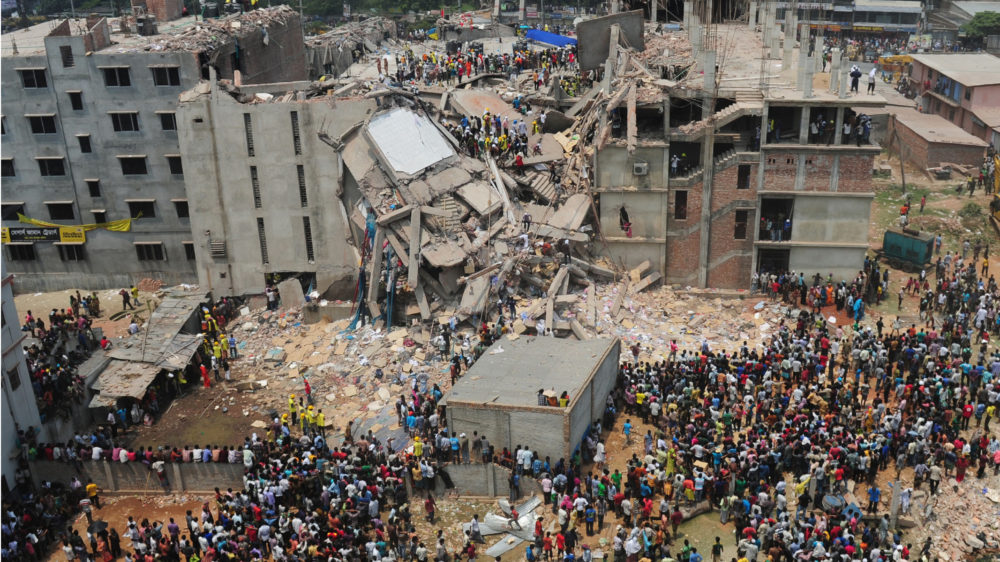
In 2013, a garment factory in Rana Plaza, Bangladesh collapsed, killing over 1,134. Over 2500 people were injured. The day before, workers had noticed cracks in the walls and foundations of the building, but factory managers ignored their complaints, and instead threatened to with-hold their paychecks, and ordered them to return the next day. The day that changed 1,134 families forever.
For the next two weeks, people were pulled from the rubble, dead and alive. Among them, tags and fabric were found from the brands of the Children’s Place, Primark (a British brand), Joe Fresh (sold at JCPenney), Mango, and Walmart, and several other international retailers.
This horrific tragedy marked the deadliest structural failure accident in modern history, and also the deadliest garment-factory accident in history. But it also marked a turning point in the global fashion industry.
I’ve told you about all of the horrible labor practices that go on around the world, but what’s the alternative?
How can we as consumers avoid brands that manufacture their products in factories that exploit workers?
First, you can do your research.
By reading this post and others like it, you are becoming an educated consumer. If you are this far, you are already breaking part of the cycle. Most people wouldn’t willingly support the labor practices I shared with you about, but most people simply and honestly don’t know where their clothes and other products are made. We see labels on everything, but what does that tell us?
“Made in China” doesn’t tell us if our shirt was made in a factory like the one in Ethiopia. It doesn’t tell us the name of the person who made it, or if they were paid a livable wage. As consumers, we have to look past the tag, and ask the hard questions.
Where was my shirt made?
Who made my shirt?
Were they paid a livable wage?
Were they exploited in any way?
Was my shirt made in an environmentally conscious way?
When we buy our products, these are the questions we need to ask ourselves. It’s up to us to do the research and find out if the brands we love are committed to honoring fair labor practices.
Second, you can support the brands that are committed to honoring fair labor practices.
Look for brands that certify their products are “ethically made,” “fair trade,” or “made in the USA.” Companies and brands that label their products as ethically made are certifying that that they honor fair and safe labor practices, and that they are conscious of the environment. These companies either regularly visit and have close relationships with the factories they work with, or they work directly with their artisans and producers.
Fair trade certified brands will have a logo or sticker like this:

Fair trade certified brands ensure that their products are made in safe conditions, by workers who are paid a livable wage, and work fair hours.
Products that are made in the USA are also a great alternative to unethical brands. In the USA, we have labor laws that protect our producers and factory workers from the exploitation other workers around the world face. Auditors and inspectors regularly visit factories in the USA to maintain that they comply with fair labor practices and the laws of this country, and the minimum wage law ensures that people earn living wages.
Third, you can change the way you consume.
As consumers, we are used to a capitalistic economy that caters to our every want and need. Fashion and market trends change with the click of a button or snap of your fingers. Things leave the market just as fast as they enter.
On average, a fashion garment is worn only 4 times before it gets thrown away. Often, we don’t shop looking for items that will last. We buy what is currently trendy and cute now, and don’t stop to think about the way we will feel about the item in a few months.
In order for our current fashion industry to change, we as consumers have to change. We have to move away from fast fashion and towards slow, conscious fashion. When you are about to buy an item of clothing, ask yourself these questions:
Am I only buying this because it is in fashion or trendy now?
Will I like this item one year from now?
Will this item become a staple piece in my closet?
Is this item ethically and consciously made?
Is this item well-crafted and made to last?
Slow fashion is all about making the most of what we have, and getting as much use out of the products we buy. Slow fashion means buying a pair of ethically and well-made jeans that cost $60 instead of three pairs of unethically and cheaply made $20 jeans.
With slow fashion, we have to surrender the mindset that we need more, and instead buy less and buy better.
Slow fashion forces us to shift our style and mindset from fast and trendy to slow and classic. It’s a shift we must make in order to create a true change in the way we purchase.
Slow fashion also pushes us to make buying new products our last resort. It’s best to first use what you have, then borrow or swap with someone else.

Ethically and fairly made clothing isn’t always the most affordable, and it can sometimes be hard to find room in your budget to buy these products. Often, our budget is what pushes us to buy unethically made clothing, simply because it’s cheaper.
However, there’s another way that is easy on your wallet, helps you find cute clothes, and doesn’t hurt the environment or aid unethical fashion. Thrift shopping is the easiest and most affordable way to change the way you shop and consume.
But even if you find some incredible deals, don’t just buy something because it has a certain brand name or because it’s cheap; buy it because you will wear it.
Here are several good thrift stores to get you started!
Goodwill- clothing, shoes, home goods, furniture
Salvation Army- Clothing
Family Thrift Center- Clothing, Shoes, Accessories
Plato’s Closet- Junior’s Clothing
Style Encore- High End Clothing Brands
Once Upon A Child- Children’s Clothing
Kid-to-Kid- Children’s clothing
ReStore- Home Goods, Furniture, Hard Ware, Building Materials
If you have to or need to buy something new, buy it ethically. Buying is usually a last resort, because it’s always best for our planet and people to use what we have first.
Lastly, we can petition the brands we love to make major changes in the way they source and supply their clothes.
Last year, I decided to send an email to a clothing company that I loved. Every time I shopped in this store, I noticed that they carried some fair trade and made in the USA clothing, but I wondered about where the rest of their clothing was made. I searched their website, but found no answer.
So I decided to send them an email.
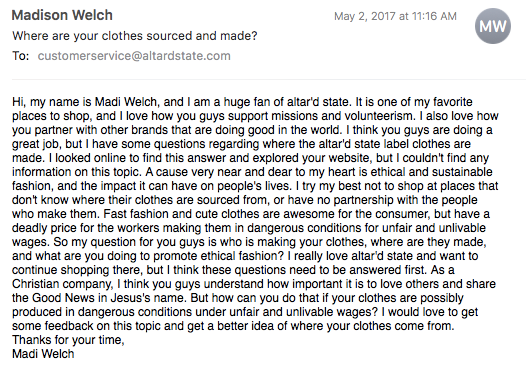
Later that day, I got a reply… but it wasn’t the answer I was hoping for.
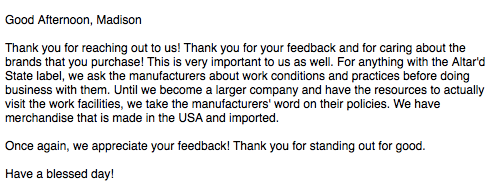
This is a company that earns millions in revenue each year, carries some fair trade and made in the USA brands, and donates 1% of their sales to charity.
Their mission statement reads, “SERVING as an inspiration, EMPOWERING others, by GIVING more than we receive, we stand out for good to glorify GOD.”
But are they only empowering the people they sell their clothes to?
How are they empowering the people who make their clothes?
How can they not use the resources they have to ensure and make sure that the factories they are working with do not support unfair labor practices?
We as consumers have to hold these brands accountable, and call them out on the things they should be doing better. It’s not enough to just “take the manufacturer’s word on their policies.”
Companies need to take the step to knowingly and willingly work with factories and production facilities that certify safe and fair working conditions for their employees.
This is the email I sent back to their response:
I never received a response back. I have since decided not to shop their store label clothing, because I don’t know where it comes from or who is making it.
As consumers we have an obligation and duty to put the pressure on brands and companies to create better labor practices and to ensure the safety of their workers.
If not us, then who? If not now, then when? No one else is going to hold these brands accountable, but as their customers, we have the power to demand change.
If we choose not to buy from brands that aren’t willing to make a change in their supply chain, than we are showing them that a change needs to take place in order for customers to buy from them.
It shouldn’t be enough that an item of clothing is beautifully made. It needs to also be crafted by hands that aren’t being abused or exploited.
It shouldn’t be enough that an item of clothing is on sale or has a reasonable price. It also needs to be made by someone who is being paid a livable and fair wage.
It shouldn’t be enough that an item of clothing is cute and stylish. It needs to be made by someone who isn’t a child laborer.
These are the requirements we need to hold brands accountable to, and it’s up to us as consumers to make our requirements known.
Brands have the power and resources and money to change the way their goods are supplied.
It is up to us to demand that change. It is up to us become more educated consumers, and to learn about the brands we are buying from. It is up to us to change the way we think about fashion and consumption. It is up to us to buy better, and to support brands that are making an effort towards ethical and fair fashion.
Fast fashion isn’t cute. So what are you going to do about it?



OK. Amazingly well written. World changer, I guess!!! Thank s for opening my mind and heart to this.
Thank you for this inspiring post! I noticed that Fair Indigo was not listed in women’s apparel–I had thought they were proponents of fairness and sustainability and eco consciousness. Was their omission an oversight, or is there something about their business practices that is deficient?
She has depicted such a humble message. I remember the time when my daughter was 18, and she used to speak the same thing.
Great job on this article. I will be more aware of labels.
I wish you well in this project.
Linda
This is fantastic! A great resource with all of the links- I will definitely use it!
This is one of my favorite posts ever. Great job Madi! You’ve opened a lot of eyes today.
THANKS, MADISON AND KRISTEN, AND GOD BLESS YOU!
LOVE IN CHRIST.
Informative read!
Would you mind sharing your source for the stat that the average fashion garment is only worn four times? Thanks!
I don’t buy new clothes. I can’t afford it, so it isn’t hard to keep to thrift store and garage sale clothing for me! But I am sad to hear about Altar’d State. I only own 2 dresses from that store, but I purchased my wedding dress from them in 2015. It wasn’t officially a wedding dress, but it was beautiful cream lace and soft burlap. That’s one way I’ve done slow fashion! Instead of spending hundreds or thousands on a wedding dress, I spent $100 on a dress that I can re-wear. It’s way more unique than a typical wedding dress too.
I am so grateful for all the ways you have gone slitherio above and beyond for me.
This post is a valuable resource for anyone wanting to understand the issues within the fashion industry and make more conscious Escape Road City choices as a consumer. It empowers readers with knowledge and practical steps to contribute to a more just and sustainable fashion future.